This article will cover two basic causes of cracks in your foundation wall. If you have any signs of stress going on with your foundation go ahead and call your local structural engineer about your issue.
In the video, I use the box demonstration to show how these cracks can form. A typical residential foundation is very similar to our cardboard box design.
The Box Model
The bottom of the box is your foundation and the top of the box is the main floor system of your house. The diaphragm of the basement slab and the diaphragm of the main floor framing creates the strength of the wall. Typically, residential walls are not retaining walls.
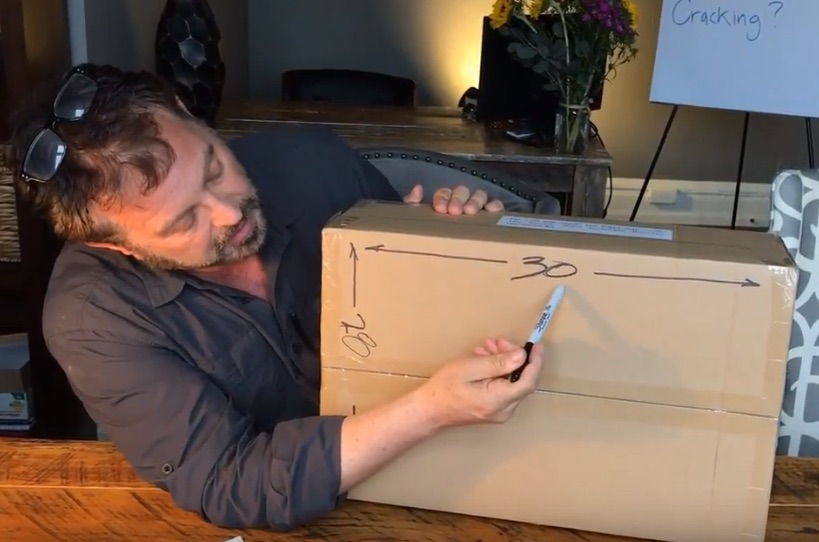
Retaining walls are relatively rigid walls used for supporting the soil mass laterally so that the soil can be retained at different levels on the two sides.
On a typical home, the floor framing and the basement slab is what resists the soil loads. The external soil pressure against your footing is triangular in nature. This means, as it gets deeper, the pressure gets greater. When there’s no soil, there’s zero pressure against the wall, and as it gets deeper, the pressure gets larger. (See diagram below)

[P = qh]
‘P’ = total active soil force in pounds per lineal foot of wall length.
‘q’ = equivalent fluid density
‘h’ = depth in feet of the wall.
So what is the ‘P’ in the equation? This is kind of surprising depending on the soil type. If you have a sandy soil versus a heavy clay soil your pressure can double. But let’s talk about an average.
Let’s pick 60 for ‘P.’
So in this rule, if you have a typical eight foot soil pressure against your wall (clay soil) you could have upwards of 1800 pounds of pressure against your exterior wall for every foot.
30 foot foundation wall, multiplied by 1,800, equals 54,000
That is the total load against against your that foundation wall of your house. This is a pretty staggering number. This most often occurs when there is a saturated condition of soils. This is why you hear that drainage away from my house is important. Saturated soil pressure is the number we are concerned about.
Ensure there is proper drainage away from your foundation and away from your house. Soils get heavier when they’re wet and that’s when you started getting such large amounts of pressure against the 30 foot long foundation wall.
In the video, we cut the basement (box) in half so you can see some detail.
Diagonal Foundation Cracking
The connection between the floor of your house typically consists of an anchor bolt every 4-6 feet connected to 2 x 4’s sitting on your wall. If this connection fractures under stress, you will typically see inward movement from the top part of the wall. The pressure from the outside will slowly push the wall into your basement over time.
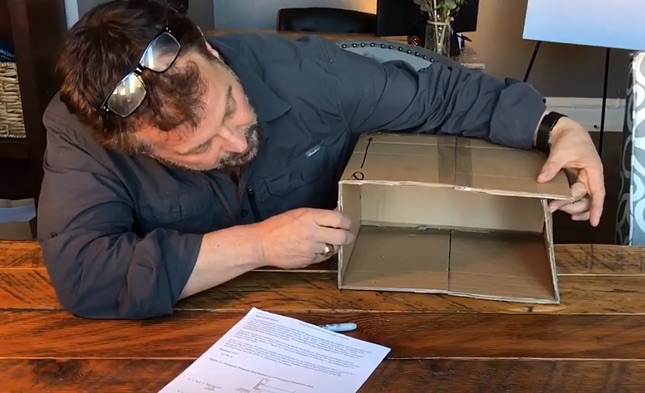
In that case, the characteristic of the crack that you’re going to see if you’re standing in your basement looking at your wall, is going to be a diagonal crack from the top down. Your connection to your floor is no longer intact and has given away.

Horizontal Foundation Cracking
Now, another common failure due to lateral soil pressures is the scenario where the connection to the floor and the connection to the concrete basement slab is still in tact but the wall itself bends in from the middle. This typically creates a horizontal crack along the the wall. What’s happening is the structure of the wall itself isn’t strong enough to resist that weight.
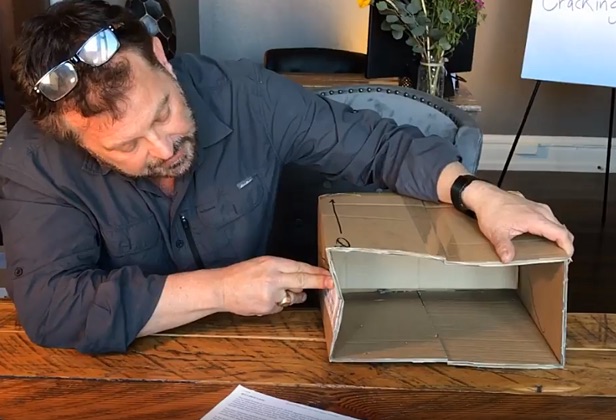
With the clay model, you can clearly see how the horizontal crack would start to form under this type of stress.
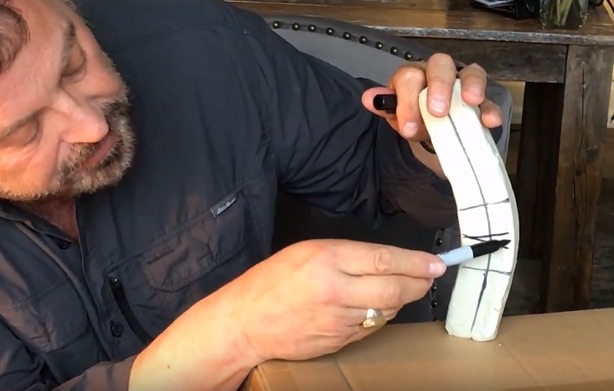
If You Have A Walk-out Area
If you have a walk out area that doesn’t have a foundation on one side, you can get a completely different type of movement. foundation where you actually have a walk-out scenario. Since there is less resistence on the other side of this wall, if you have heavy pressure coming from the other side of the house, you start to see signs of rotating or pushing over. The foundation wall being pushed over will start to look out of plum.
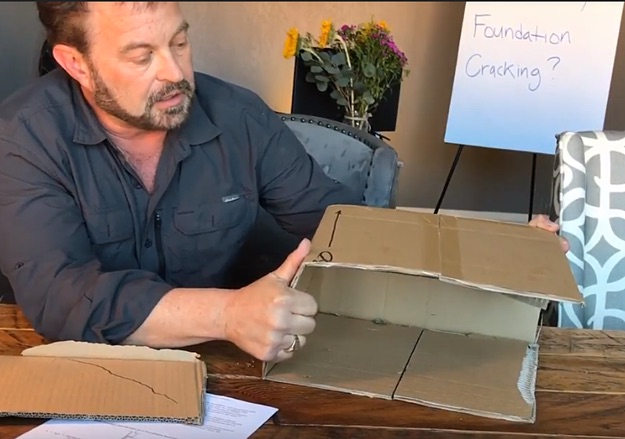
Summary
These are two of the cracks you might see in your foundation due to lateral soil pressures. In the next article we will talk about swelling clay soils as the cracks can differ greatly.
Pay attention to your foundation, if you see any sign of stress (cracks, movement, shifting), call your local structural engineer.
If you are seeing serious issues, do not panic. There are great companies out there that make amazing products that can resolve this.
The two nationwide companies that we recommend for foundation repair products are:
Thanks for reading.






2 Responses
Yesterday, I went outside to play with my new daughter in the yard. It was such a nice day so it was her first time getting to play in the grass. However, while I was outside, I noticed that my neighbor’s foundation looked chipped and cracked. Thank you for informing me that horizontal cracks indicate that the wall could not be strong enough to support the weight it is holding. I will have to talk to my neighbors about it.
Wow, thank you for informing me that pressure by dirt can cause horizontal cracking. About a week ago, I went to my sister’s house to take care of her dog. While I was outside in the backyard, I noticed some large cracks in the foundation. I want my sister to be safe in her home, so I will have to help her look for crack repair services in our area.